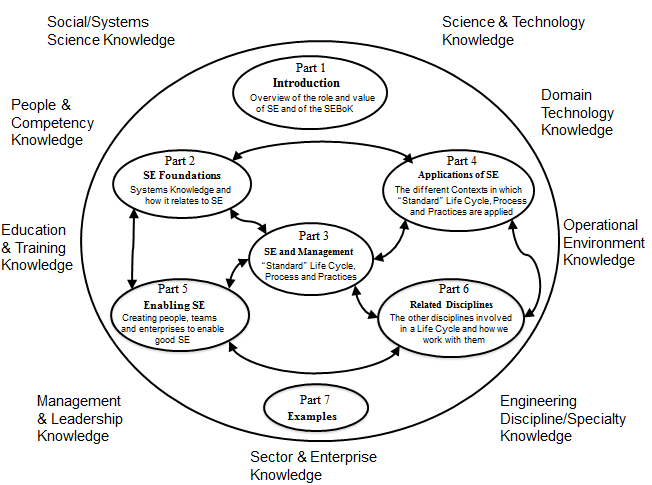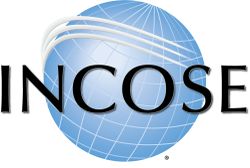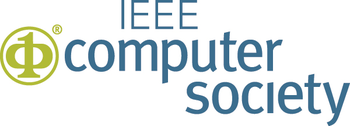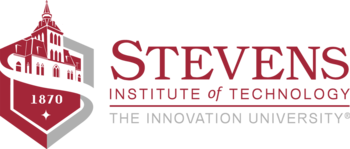Difference between revisions of "Guide to the Systems Engineering Body of Knowledge (SEBoK)"
| Line 33: | Line 33: | ||
Articles in the SEBoK can be found by using the ''Search'' field in the upper right corner of each page, as well as through the ''Quicklinks'', ''Outline'', and ''Navigation'' menus in the left margin of each page. Detailed instructions about the page layout and features are found in [[How to Read the SEBoK]]. There is a link in the left margin under ''Quicklinks'' explaining how to [[Cite the SEBoK]] correctly. | Articles in the SEBoK can be found by using the ''Search'' field in the upper right corner of each page, as well as through the ''Quicklinks'', ''Outline'', and ''Navigation'' menus in the left margin of each page. Detailed instructions about the page layout and features are found in [[How to Read the SEBoK]]. There is a link in the left margin under ''Quicklinks'' explaining how to [[Cite the SEBoK]] correctly. | ||
| − | As a living document, at the bottom of each page, version identification can be found in a link called "[[About the SEBoK]]." A PDF of the SEBoK v. 1 | + | As a living document, at the bottom of each page, version identification can be found in a link called "[[About the SEBoK]]." A PDF of the SEBoK v. 2.1, as well as archive copies of earlier versions, may be downloaded at [[Download SEBoK PDF]]. |
| − | '''Comments can be left on any page of the current SEBoK version using the embedded comment feature.''' | + | '''Comments can be left on any page of the current SEBoK version using the embedded comment feature.''' Comments on pages will will be reviewed by the editors and considered for the next iteration. You may also view the current [[BKCASE Governance and Editorial Board|Editorial Board]] and contact editors directly about the materials in their areas of responsibility. All review comments and other updates are managed under an update process, discussed in the next section. |
| − | As the SEBoK is a compendium, much of the content has restricted intellectual property rights. This [[Bkcase Wiki:Copyright |copyright information]] is placed on each page, and must be respected. The SEBoK copyright is held on behalf of the BKCASE Board of Governors by The Trustees of the Stevens Institute of Technology. | + | As the SEBoK is a not compendium, but instead references existing literature, much of the content has restricted intellectual property rights. This [[Bkcase Wiki:Copyright |copyright information]] is placed on each page, and must be respected. Materials marked as "SEBoK Original" may be freely used with proper citation. Materials marked as "used with permission" may not be used unless the user seeks independent permission from the copyright owner. The SEBoK copyright is held on behalf of the BKCASE Board of Governors by The Trustees of the Stevens Institute of Technology. |
==SEBoK Updates and Governance== | ==SEBoK Updates and Governance== | ||
Revision as of 11:00, 30 October 2019
The SEBoK provides a compendium of the key knowledge sources and references of systems engineering organized and explained to assist a wide variety of users. It is a living product, accepting community input continuously, with regular refreshes and updates.
Systems engineering is an interdisciplinary approach and means to enable the full life cycle of successful product, service and enterprise systems. It includes problem discovery and formulation, solution definition and realization, and operational use, sustainment, and disposal. It can be applied to single problem situations or to the management of multiple interventions in commercial or public enterprises. Those new to systems engineering can find introductory articles which provide an overview of systems engineering, place it in historical context, and discuss its economic value in Part 1 of this body of knowledge.
Welcome to SEBoK v. 2.1
On behalf of the BKCASE Editorial Board, the BKCASE Governing Board, and sponsors, welcome to SEBoK v. 2.1. This version was released on 31 October 2019 and reflects the continuing evolution of the SEBoK.
What's new in v. 2.1?
For a summary of the changes made for v. 2.1 see the Letter from the Editor. See Acknowledgements and Release History for a full description of the current and all previous SEBoK versions.
About the SEBoK
Systems engineering has its roots in the fundamentals, principles, and models of foundational systems sciences, and associated management and engineering sciences. It is applied through the application of systems engineering processes within a managed life cycle working with a number of other management, engineering, and specialist disciplines. While traditionally applied to product development, systems engineering can also be applied to service and enterprise systems. As systems engineering is a collaborative approach, working with other engineering and management disciplines and specialisms, it relies on enabling competencies and structures at individual, team, and organizational levels.
Starting from this basic view of the scope of knowledge relevant to SE, the SEBoK is organized into 7 parts as shown below:

- Part 1 SEBoK Introduction
- Part 2 Foundations of Systems Engineering
- Part 3 Systems Engineering and Management
- Part 4 Applications of Systems Engineering
- Part 5 Enabling Systems Engineering
- Part 6 Related Disciplines
- Part 7 Systems Engineering Implementation Examples
The SEBoK also includes a Glossary of Terms and a list of Primary References, to reflect this scope of systems engineering knowledge and its links into other bodies of knowledge.
SEBoK is a guide to the broad scope of SE related knowledge. The core of this is the well tried and test knowledge which has been developed through practice, documented, reviewed and discussed by the SE community. In addition, SEBoK also covers some of the emerging aspects of SE practice, such as Systems of Systems, Agile Life Cycle approaches or Model Based Systems Engineering (MBSE). Part 1 also includes a discussion of SEBoK Users and Uses, including a number of use cases which give advice on how different groups of users might navigate and use the SEBoK. This is a good place to start if you are new to the SEBoK. Individuals who are new to systems engineering can start with Use Case 0: Systems Engineering Novices.
How to use the SEBoK Wiki
Articles in the SEBoK can be found by using the Search field in the upper right corner of each page, as well as through the Quicklinks, Outline, and Navigation menus in the left margin of each page. Detailed instructions about the page layout and features are found in How to Read the SEBoK. There is a link in the left margin under Quicklinks explaining how to Cite the SEBoK correctly.
As a living document, at the bottom of each page, version identification can be found in a link called "About the SEBoK." A PDF of the SEBoK v. 2.1, as well as archive copies of earlier versions, may be downloaded at Download SEBoK PDF.
Comments can be left on any page of the current SEBoK version using the embedded comment feature. Comments on pages will will be reviewed by the editors and considered for the next iteration. You may also view the current Editorial Board and contact editors directly about the materials in their areas of responsibility. All review comments and other updates are managed under an update process, discussed in the next section.
As the SEBoK is a not compendium, but instead references existing literature, much of the content has restricted intellectual property rights. This copyright information is placed on each page, and must be respected. Materials marked as "SEBoK Original" may be freely used with proper citation. Materials marked as "used with permission" may not be used unless the user seeks independent permission from the copyright owner. The SEBoK copyright is held on behalf of the BKCASE Board of Governors by The Trustees of the Stevens Institute of Technology.
SEBoK Updates and Governance
The SEBoK is sometimes compared to Wikipedia. The SEBoK is like Wikipedia in its most fundamental structure, as it is a collection of electronic articles built on MediaWiki technology. However, the SEBoK is unlike Wikipedia in that its content is carefully controlled. Anyone in the community can suggest changes be made to SEBoK articles, but the Editorial Board will review all recommendations before they are implemented in the SEBoK. Wikipedia is a much more open wiki, allowing virtually anyone to change any article, while reserving the right to undo changes that are offensive or otherwise violate Wikipedia's rules. Tight control over SEBoK content is a trade-off. Such control ensures a stable baseline whose quality and integrity are assured by its editors. On the other hand, such control discourages some members of the community from contributing improvements to the SEBoK.
New releases of the SEBoK are under the control of the Governing Board appointed by the stewards, who oversee the SEBoK Editor in Chief and Editorial Board. The stewards contribute resources to manage the SEBoK wiki, support new releases, and encourage SEBoK adoption. Volunteer authors from the worldwide SE community continue to propose and create new content and other volunteers review that new content. The stewards are INCOSE, the Systems Engineering Research Center, and the IEEE Computer Society.

|
|
Email may be sent to bkcase.incose.ieeecs@gmail.com.

